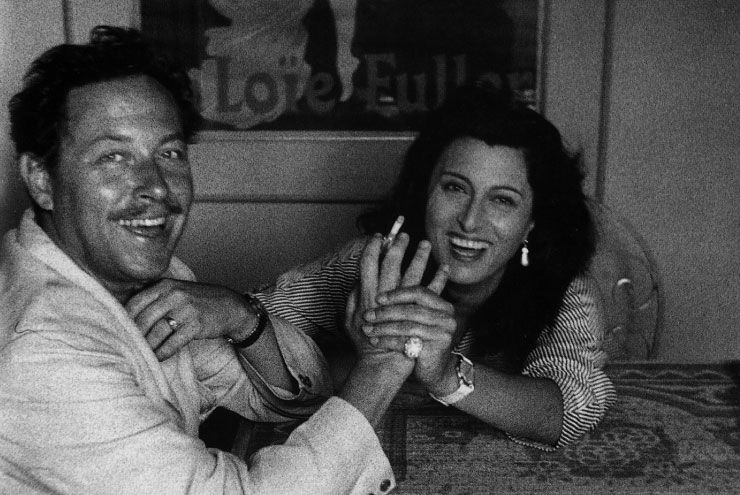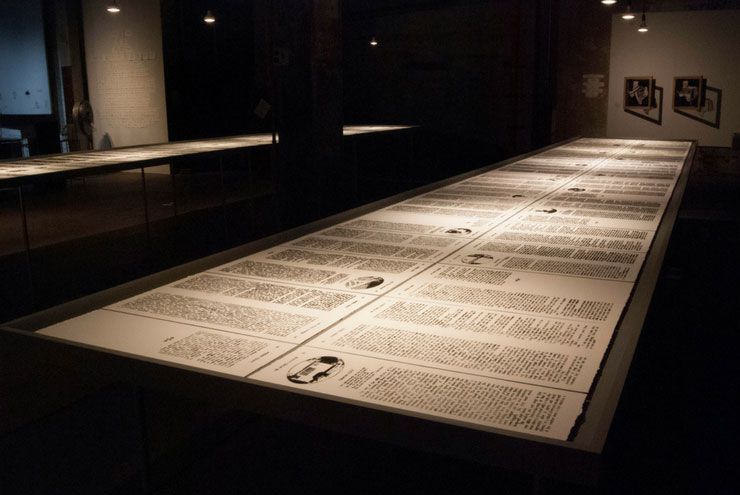By Austin Svedjan
Within the canon of southern literature, it is rare to find queer authors who died within 200 miles of where they were born. It is even rarer is to find a queer author who did so and lived freely. Most made their exodus from the South and sought refuge in queer urban hubs, such as New York, San Francisco, or Los Angeles. One of the most famous amongst those who journeyed away from his roots, but whose plays kept his southern heritage alive, was Tennessee Williams.
Born in rural Mississippi and later raised in St. Louis, Williams moved north in 1937 for a short academic stay in Iowa before ultimately settling in New York City at age 29. Williams revelled in the opportunity the City presented, and even pursued a handful of short-lived sexual encounters with other men—all while remaining famously aloof in all public matters concerning his sexuality.
By 1945, he had finished his first critically–acclaimed play, The Glass Menagerie, which examined the family dynamic of a mother (Amanda), son (Tom—Tennessee’s legal name), and his sister (Laura). The play’s concentration on the familial, along with other facets of the play, are autobiographical in nature, and act as a cataloguing of self; a recurring motif within Williams’ works. Though the queerness within The Glass Menagerie is veiled, it is by no means absent. Tom goes out to “the movies” each night, only to return home drunk. As Williams himself said at the opening of the play, “I give you truth in the pleasant disguise of illusion.” Eventually, Tom leaves St. Louis to pursue a life removed from the strict confines imposed upon him by his family, a move that eerily mirrors Williams’ own departure from St. Louis eight years prior.
Two years after The Glass Menagerie opened on Broadway, Williams’ next triumph came in the form of A Streetcar Named Desire, which arguably remains his masterpiece. The play is set in the French Quarter of New Orleans (where Williams frequented when not in New York or Key West) and centers around disgraced debutante Blanche DuBois. Williams utilizes Blanche as a larger symbol of the disarrayed state of southern aristocracy, and, as the play unfolds, Blanche reveals that she was once married to a man named Allan. Through the progression of the play, we learn that Allan committed suicide after Blanche caught him having an affair with an older gentleman. His memory, however, continues to haunt her and has derailed her life ever since. In this regard, Blanche’s decay can be viewed as the direct result of the insufferable southern traditions which oppress the region’s queer inhabitants. Although a character’s queerness is specifically acknowledged in the play—a noticeable evolution from the shrouded homosexuality in The Glass Menagerie—A Streetcar Named Desire still only retrospectively examines Allan’s character. While Williams was, by this time, enveloped in the arms of the more progressive North, the deep-rooted shame surrounding his own homosexuality from his southern rearing insisted—thus, his portrayal of southern queers during this period can be viewed in the same manner in which Williams viewed his own identity as a southerner, in memory.
Williams did not debut another queer stage production for nearly a decade, until the 1955 Broadway opening of Cat on a Hot Tin Roof. Much like Streetcar, the death of a queer man, Skipper, lies at the play’s center. We watch as Brick Pollitt, Skipper’s friend and suggested lover, mourns his death. Williams’ personal battle with alcoholism is no secret, and this trait is paralleled in Brick, who drinks to relieve himself of his “disgust for mendacity.” From a queer perspective, this revulsion to untruthfulness stems from Williams’ own attempt to conceal his sexuality from the public eye. In the last act of the play, Williams—through Brick—reflects on his aversion to revealing his authentic self: “Don’t you know how people feel about things like that? How, how disgusted they are by things like that?”
Although things eventually improved for Williams, who came out through a series of small press releases later in life, his narrative is one that is still relatable to a vast majority of queer southerners today. Like Williams, contemporary queer southerners are often ensnared in an internal conflict of opposing identities—to be southern and queer. Though the queer aspects of Williams’ works can be subtle, his enamor for the South is not. Williams’ work serves as a reminder that our love for our southern identities is just as valid as the love for our queerness, and that we must not sacrifice one for the preservation of the other.







